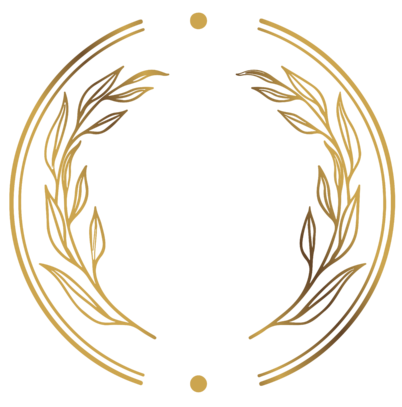The importance of sustainability in architectural design cannot be overstated. It’s time to think beyond the traditional ways of designing and look towards a sustainable future. Green architecture is the way forward, and Philadelphia is leading the way with its green initiatives. From energy performance programs to advancing environmental design standards, Philadelphia has been making strides towards a greener city. In this blog, we will dive deeper into the initiatives that Philadelphia has taken to become a more sustainable city, including the progress they have made so far and what future developments we can expect to see. We will also discuss some of the challenges faced in implementing green architectural design and how other cities’ approaches could provide solutions for Philadelphia. Join us as we explore how you can contribute to Philadelphia’s green initiatives and help build a better future for all.
The Importance of Sustainability in Architectural Design
Sustainability is a critical factor in architectural design as it promotes environmental responsibility, reduces carbon emissions, and enhances the quality of life for occupants. Sustainable architecture aims to minimize the negative impact of buildings on the environment while maximizing their positive contributions. By using renewable resources and reducing waste, sustainable buildings can help mitigate climate change. Additionally, sustainable design features such as natural lighting, proper ventilation, and ergonomic workstations can improve the health and well-being of building occupants. Furthermore, incorporating sustainability into architectural design can also reduce operational costs and increase property value over time. Therefore, prioritizing sustainability in architectural design has far-reaching benefits for both people and the planet.

Defining Green Architecture
Green architecture is a design approach that prioritizes energy efficiency, renewable energy sources and minimizes environmental impact in architectural design. This type of architecture aims to create sustainable buildings that reduce carbon emissions and improve the quality of life for occupants. The use of solar panels, green roofs, and rainwater harvesting systems are some examples of how green architecture achieves its goals. Additionally, by using eco-friendly materials like recycled steel and bamboo, green buildings can also reduce their carbon footprint during the construction process. Ultimately, the focus on sustainability in green architecture not only benefits the environment but also leads to healthier and more comfortable living spaces for people.
Philadelphia’s Green Initiatives: A Step Towards Sustainable Future
Philadelphia is leading the way in sustainability with its emphasis on green initiatives and programs, which aim to reduce energy usage and carbon emissions in the built environment. The city has implemented several measures, including recycling programs, public transportation options, and green building regulations, to promote eco-friendly practices and mitigate the effects of climate change. Philadelphia’s efforts have garnered recognition from various organizations, positioning it as a model for other cities looking to prioritize sustainability.
Building Energy Performance Program: A Key Initiative
The Building Energy Performance Program (BEPP) in Philadelphia aims to foster a sustainable future by promoting energy efficiency, benchmarking, and improvements in building energy performance. The program requires owners of large commercial buildings to report on their energy usage and disclose it publicly, creating transparency around energy consumption. This not only helps identify areas for improvement but also provides an incentive for building owners to invest in energy-efficient upgrades. The BEPP has successfully reduced energy consumption and greenhouse gas emissions while saving building owners money on utility bills. It serves as an excellent example of how local government can drive sustainability initiatives that benefit both the environment and the economy.
Facility Benchmarking and Commitments in Philadelphia
Facility benchmarking is an effective way to track energy usage and identify areas for improvement in Philadelphia. By analyzing energy consumption data, building owners can recognize opportunities to decrease energy waste and improve efficiency. In addition, building owners are encouraged to commit to energy efficiency goals as part of the city’s sustainability efforts. This not only benefits the environment but can also lead to cost savings for the building owner over time. Through benchmarking and setting goals, Philadelphia is taking a proactive approach towards reducing its carbon footprint and promoting sustainable practices in its buildings.

Advancing Energy Efficiency and Environmental Design Standards
Philadelphia is a city that places great emphasis on the environment and sustainability. As such, it has embraced green building certifications like LEED (Leadership in Energy and Environmental Design) to set high standards for energy efficiency and environmental design in new construction projects. The city’s commitment to sustainable building practices has resulted in an increasing number of buildings that are not only environmentally friendly but also provide healthier indoor environments for their occupants. In addition, green buildings have been shown to have lower operating costs, making them a wise investment for developers and property owners alike. Philadelphia’s focus on green building certifications is a reflection of its dedication to creating a more sustainable future for its residents and the planet as a whole.
Philadelphia 2030 District: A Pledge towards Sustainability
The Philadelphia 2030 District is a joint initiative aimed at achieving ambitious targets in energy use, transportation emissions, and water use to enhance the sustainability of existing buildings through innovative approaches. The program aims to reduce energy consumption by 50% and water usage by 50% while also cutting transport emissions by 50%. This collaborative effort provides an opportunity for building owners, managers, and other stakeholders to work together to create a more sustainable built environment that benefits both the city and its inhabitants. By implementing new technologies and strategies, the Philadelphia 2030 District is leading the way in sustainable urban development.
Who’s Participating in Philadelphia 2030 District?
The Philadelphia 2030 District is a multi-stakeholder initiative that aims to promote sustainable architecture and design. The program brings together property owners, developers, managers, universities, and hospitals to work towards common sustainability goals. By collaborating across different sectors, the initiative seeks to reduce energy consumption, water usage, and greenhouse gas emissions in buildings throughout Philadelphia. The program also provides resources and support to help stakeholders achieve their sustainability targets. Through this collaborative effort, the Philadelphia 2030 District is helping to create a more sustainable future for the city’s built environment.
Progress Report: How is Philadelphia Doing in Achieving its Goals?
Philadelphia has made significant strides in reducing energy consumption and carbon emissions, with a focus on sustainable practices. The city has been recognized for its efforts through the awarding of LEED Gold certification to many municipal buildings. This certification reflects Philadelphia’s commitment to promoting sustainable practices and reducing its environmental impact. Moreover, the city has implemented various initiatives such as improving public transportation infrastructure, encouraging energy-efficient building designs, and promoting renewable energy sources to support its goal of becoming a more sustainable city. These efforts not only benefit the environment but also improve the quality of life for residents by creating healthier and more livable communities.

Getting Involved: How to Contribute to Philadelphia’s Green Initiatives?
Philadelphia’s green initiatives can benefit greatly from individual contributions. People can adopt sustainable practices in their homes and workplaces, such as conserving energy and reducing waste. Simple steps like using reusable water bottles, turning off lights when not in use, and recycling can make a significant difference. Supporting local organizations that work towards sustainability is another great way to contribute. There are many non-profit organizations in the city that focus on sustainability, environmental education, and conservation efforts. By volunteering or donating to these organizations, individuals can help create a more sustainable future for Philadelphia. Moreover, it is vital to educate oneself about sustainable living practices and advocate for them in the community. Encouraging friends and family members to adopt eco-friendly habits can have a ripple effect and inspire more people to join the cause. Together, these small steps can make a big impact on the environment while preserving Philadelphia’s natural beauty for generations to come.
Challenges in Implementing Green Architectural Design
Integrating green design principles into existing infrastructure and urban environments can be challenging due to resistance to change and traditional design practices. It is essential to strike a balance between upfront costs and long-term benefits, as well as ensure compliance with local building codes. Collaboration with stakeholders is crucial in aligning sustainability goals. Green design should not be an afterthought but rather integrated into the planning process from the outset.
By incorporating sustainable design principles into existing infrastructure, we can create buildings and environments that are healthier for both people and the planet. This requires a shift in mindset towards a more holistic approach that considers the entire lifecycle of a project, from construction to demolition. However, by prioritizing sustainability and working collaboratively, we can achieve a more resilient and sustainable future for all.
Could other cities’ approaches be a solution for Philadelphia?
Learning from successful sustainability initiatives in cities like Portland and San Francisco could provide valuable insights for Philadelphia. By adopting best practices, leveraging experiences, and collaborating with experts, Philadelphia can overcome implementation challenges and tailor strategies to suit its unique needs.
The Impact of Green Initiatives on Philadelphia’s Community
Sustainable design and construction have become increasingly popular in recent years due to their ability to improve residents’ quality of life while reducing carbon emissions. By implementing sustainable practices in building projects, architects and builders can create healthier buildings that promote well-being and enhance public spaces. Additionally, sustainable design can stimulate economic growth in the green building sector by creating new jobs and opportunities for businesses focused on sustainability. Through a combination of innovative design strategies, building materials, and technology, sustainable buildings can provide a range of benefits for residents and the environment alike.
What Future Developments Can We Expect in Green Architecture?
Green architecture’s future is promising with developments that promote sustainability. Adoption of renewable energy reduces carbon footprints, while smart technologies and water conservation contribute to reduced energy and water usage. Using recycled materials and maximizing natural light and ventilation further minimize environmental impact. Implementing stricter sustainability standards, such as building codes and certifications, ensures effective implementation. The future of green architecture looks bright with an emphasis on sustainable practices to mitigate climate change and preserve our planet for future generations.
Conclusion
In conclusion, Philadelphia’s green initiatives are a testament to the city’s commitment to a sustainable future. Through programs like the Building Energy Performance Program and the Philadelphia 2030 District, the city is making great strides in advancing energy efficiency and environmental design standards. However, there are still challenges to overcome in implementing green architectural design, and looking to other cities’ approaches may provide valuable solutions. The impact of these initiatives extends beyond the environment, benefiting the community as a whole. By getting involved and contributing to Philadelphia’s green initiatives, we can all play a role in shaping a more sustainable and vibrant city. Together, we can expect to see exciting future developments in green architecture that will further enhance Philadelphia’s commitment to sustainability. Let’s work towards a greener and brighter future for our city.






